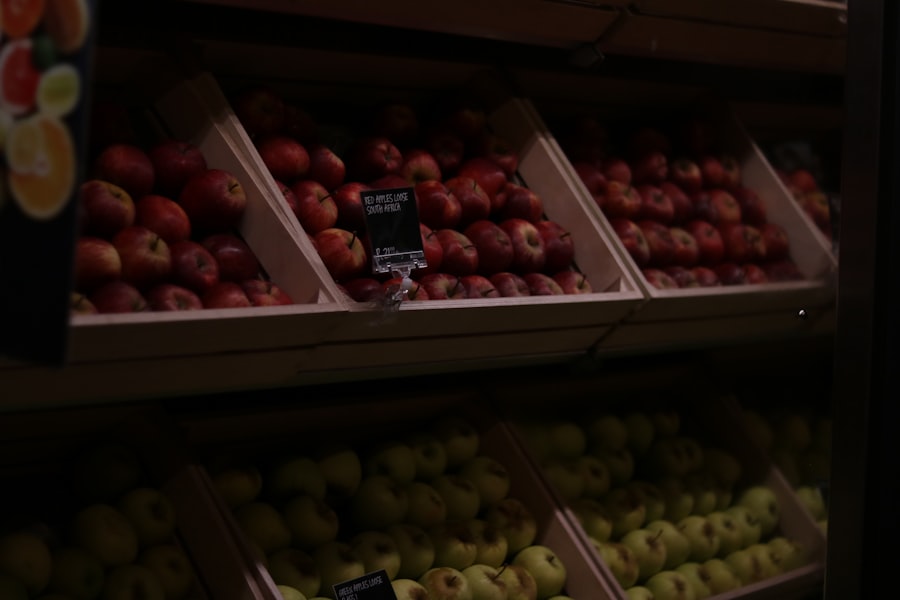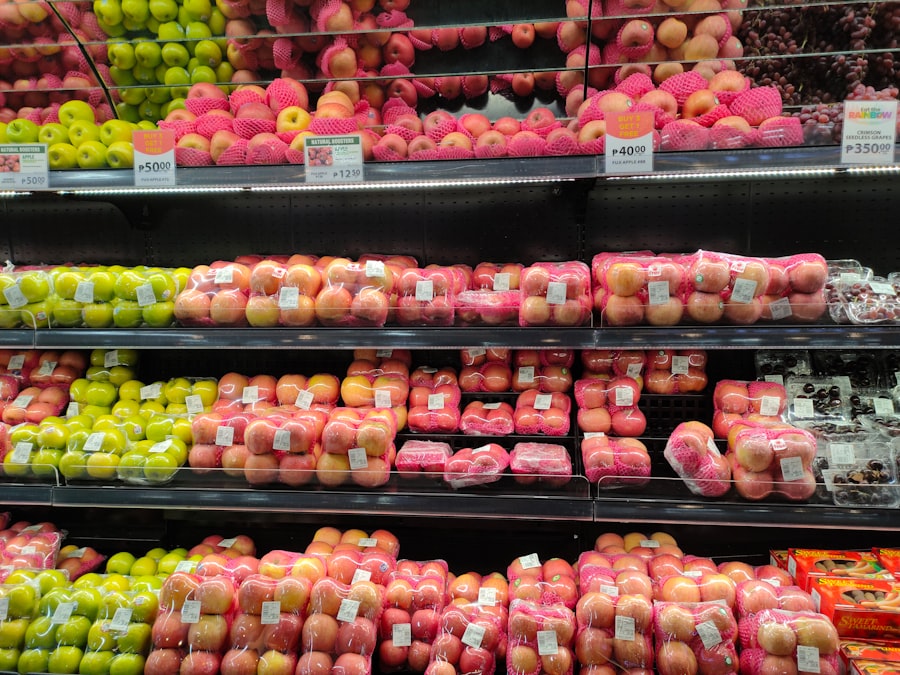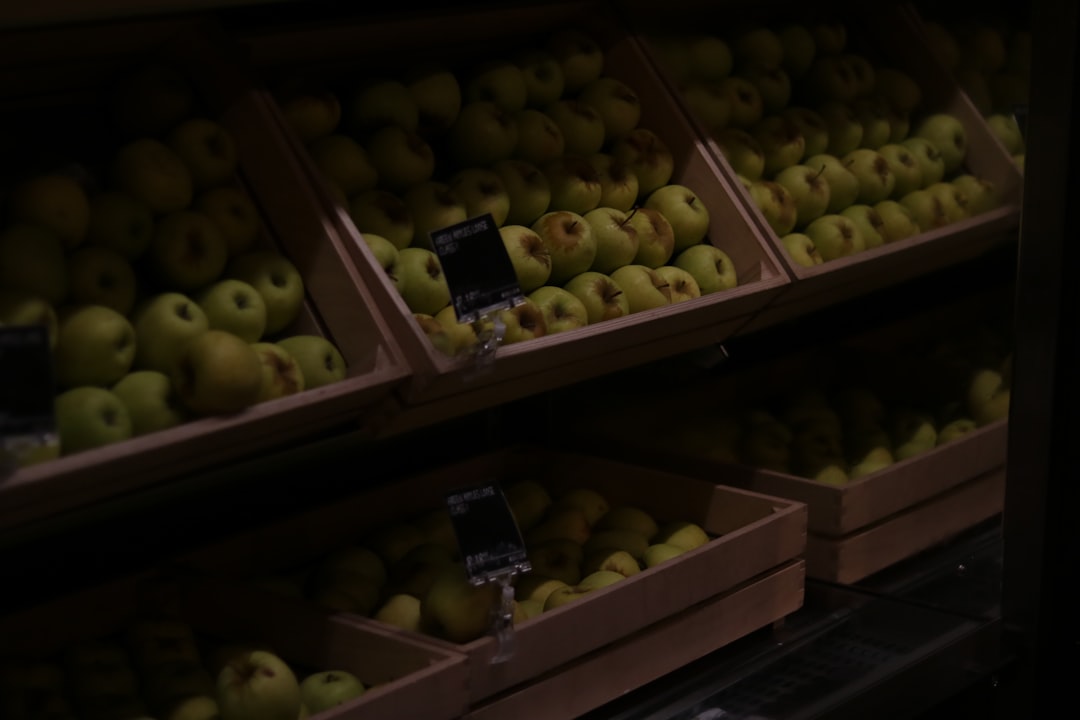An apple, a seemingly simple fruit, is a complex structure composed of various parts that contribute to its overall characteristics. At its core, the apple consists of three primary layers: the skin, the flesh, and the core. The skin, or exocarp, serves as the first line of defense against pests and environmental factors.
It is rich in antioxidants and provides a vibrant color that can range from deep red to bright green, depending on the variety. Beneath the skin lies the fleshy mesocarp, which is primarily composed of water, sugars, and various nutrients.
The innermost layer, known as the endocarp, encases the seeds and is often tougher than the flesh. This structure is crucial for the reproductive process of the apple tree, as it protects the seeds until they are ready to germinate. Each of these layers plays a significant role in the apple’s overall texture and taste.
Understanding this anatomy is essential for appreciating how different factors influence the crunchiness and firmness of apples, which are qualities that many consumers seek when selecting their favorite varieties.
Key Takeaways
- Apple crunchiness is influenced by cell wall thickness and pectin content.
- Sugar, acid levels, and enzymes play key roles in determining apple texture.
- Temperature and storage conditions significantly affect apple firmness over time.
- Ethylene gas drives ripening, impacting the apple’s crispness and texture.
- Proper harvesting, handling, and home storage tips help maintain apple crunchiness.
The Role of Cell Wall Thickness in Apple Crunchiness
Cell wall thickness is a critical factor that directly influences the crunchiness of an apple. The cell walls are primarily composed of cellulose, hemicellulose, and pectin, which together create a rigid structure that supports the fruit’s integrity. Thicker cell walls generally contribute to a firmer texture, allowing for that satisfying crunch when bitten into.
In contrast, thinner cell walls can lead to a softer texture, which may not provide the same level of enjoyment for those who prefer a crisp apple. Research has shown that different apple varieties exhibit varying degrees of cell wall thickness.
This structural characteristic not only enhances the eating experience but also affects how the apple holds up during storage and transportation. As apples age or are subjected to improper handling, changes in cell wall integrity can occur, leading to a decline in crunchiness. Thus, understanding the role of cell wall thickness is essential for both growers and consumers who value texture in their apples.
The Importance of Pectin in Maintaining Apple Firmness

Pectin is a naturally occurring polysaccharide found in the cell walls of fruits, including apples. It plays a vital role in maintaining firmness and structure within the fruit. Pectin acts as a glue that holds cells together, contributing to the overall texture and stability of the apple.
As apples ripen, pectin undergoes changes that can affect firmness; specifically, it begins to break down, leading to a softer texture over time. This process is particularly important for consumers who prefer their apples to be firm and crunchy. The amount and type of pectin present in an apple can vary significantly between different varieties.
Some apples contain higher levels of pectin, which helps them retain their firmness longer than others. For example, Granny Smith apples are known for their tartness and crispness, partly due to their higher pectin content. Understanding how pectin functions within apples can help consumers make informed choices about which varieties will best suit their preferences for texture and firmness.
The Impact of Sugar and Acid on Apple Texture
| Parameter | Measurement | Effect on Apple Texture | Notes |
|---|---|---|---|
| Sugar Content (Brix %) | 10-15% | Increases firmness by promoting cell turgidity | Higher sugar levels correlate with crisper texture |
| Malic Acid Concentration (g/kg) | 3-7 g/kg | Maintains cell wall integrity, enhancing crunchiness | Acid helps preserve firmness during storage |
| pH Level | 3.3 – 4.0 | Lower pH (higher acidity) slows enzymatic softening | Optimal acidity preserves texture post-harvest |
| Firmness (N) | 5 – 8 N | Direct measure of texture quality | Higher firmness indicates better texture retention |
| Storage Duration (days) | 0 – 90 days | Texture decreases over time; sugar and acid slow degradation | Controlled atmosphere storage helps maintain texture |
The balance of sugar and acid in an apple significantly influences its overall texture and flavor profile. Sugars contribute to the sweetness that many people associate with ripe apples, while acids provide a tartness that can enhance the eating experience. This balance not only affects taste but also plays a role in how crunchy or soft an apple feels when bitten into.
Generally, apples with higher sugar content tend to have a softer texture due to increased water retention, while those with higher acidity levels may maintain a firmer structure. Different apple varieties exhibit unique combinations of sugar and acid levels, leading to diverse textures and flavors. For instance, Fuji apples are known for their high sugar content, resulting in a sweet yet slightly softer bite compared to tart varieties like Braeburn or Granny Smith.
Understanding this interplay between sugar and acid can help consumers select apples that align with their desired taste and texture preferences.
How Enzymes Affect Apple Crispness
Enzymes play a crucial role in determining the crispness of apples throughout their life cycle. These biological catalysts facilitate various chemical reactions within the fruit, including those that affect texture. One key enzyme involved in this process is polygalacturonase, which breaks down pectin in the cell walls as the apple ripens.
As this enzyme activity increases, it leads to a gradual loss of firmness and crispness over time. Interestingly, different apple varieties exhibit varying levels of enzyme activity, which can influence how quickly they lose their crispness after harvest. For example, some varieties may have lower levels of polygalacturonase activity, allowing them to maintain their crunchiness for longer periods.
Understanding how enzymes impact apple crispness can provide valuable insights for both consumers looking for long-lasting freshness and growers aiming to select varieties with desirable storage qualities.
The Influence of Temperature on Apple Firmness

Temperature plays a significant role in maintaining apple firmness and overall quality. Apples are typically stored at cool temperatures to slow down metabolic processes and enzyme activity that contribute to ripening and softening. When exposed to higher temperatures, these processes accelerate, leading to a quicker decline in texture and firmness.
For this reason, proper storage conditions are essential for preserving the crispness of apples. Moreover, temperature fluctuations can also impact the quality of apples during transportation and storage. Apples stored at inconsistent temperatures may experience stress that affects their texture and flavor profile.
For instance, if apples are subjected to warm temperatures after being stored in cold conditions, they may become mealy or lose their crunchiness more rapidly than those kept at stable temperatures. Understanding the influence of temperature on apple firmness is crucial for both consumers seeking fresh produce and growers aiming to optimize storage practices.
The Role of Ethylene Gas in Apple Ripening
Ethylene gas is a natural plant hormone that plays a pivotal role in the ripening process of fruits, including apples. As apples mature, they produce ethylene gas, which triggers various physiological changes that lead to ripening. This process includes softening of the fruit’s texture as enzymes break down pectin and other structural components within the apple.
While ethylene is essential for ripening, it can also lead to a decline in crispness if not managed properly. Interestingly, different apple varieties produce varying amounts of ethylene gas during ripening. Some varieties may ripen more quickly due to higher ethylene production, while others may take longer to reach peak ripeness.
This variability can affect how long an apple maintains its crunchiness after harvest. For consumers looking for long-lasting freshness, understanding the role of ethylene gas can help them select varieties that align with their preferences for texture and flavor.
The Effects of Storage Conditions on Apple Crunchiness
Storage conditions significantly impact the crunchiness and overall quality of apples over time. Factors such as temperature, humidity, and exposure to ethylene gas all play crucial roles in determining how well an apple retains its firmness after being harvested. Ideally, apples should be stored in cool environments with controlled humidity levels to minimize moisture loss and slow down enzymatic activity that leads to softening.
In addition to temperature and humidity control, proper ventilation is essential for maintaining apple quality during storage. Apples release ethylene gas as they ripen; if they are stored in airtight containers or environments without adequate airflow, this gas can accumulate and accelerate ripening processes across all stored apples. Consequently, this can lead to uneven ripening and a quicker loss of crunchiness.
By understanding these storage conditions, consumers can take steps to prolong the freshness and crispness of their apples at home.
The Science of Apple Varieties: Which Ones Stay Crunchy Longer?
The diversity among apple varieties is vast, with each type exhibiting unique characteristics that influence its texture and longevity after harvest. Some varieties are renowned for their ability to maintain crunchiness over extended periods due to their specific genetic makeup and structural properties. For instance, Honeycrisp apples are celebrated for their exceptional crispness and ability to stay firm even after weeks in storage.
Other varieties like Gala or Fuji may offer delightful flavors but tend to soften more quickly than their crunchier counterparts. Factors such as cell wall thickness, pectin content, sugar-acid balance, and enzyme activity all contribute to how well an apple variety retains its crunchiness over time. By understanding these differences among varieties, consumers can make informed choices about which apples will best suit their preferences for texture and longevity.
The Impact of Harvesting and Handling Practices on Apple Texture
Harvesting and handling practices play a crucial role in determining the final texture of apples when they reach consumers’ hands. Gentle handling during harvesting is essential to prevent bruising or damage that can compromise an apple’s structural integrity. Bruised apples may experience accelerated softening due to increased enzyme activity triggered by physical stress.
Moreover, timing is critical when it comes to harvesting apples at their peak ripeness. Apples picked too early may lack flavor and sweetness while being overly firm; conversely, those harvested too late may become mealy or lose their desirable crunchiness due to excessive ripening processes. Proper training for harvesters on best practices can help ensure that apples maintain optimal texture throughout their journey from orchard to market.
Tips for Keeping Apples Crisp at Home
To keep apples crisp at home requires attention to storage conditions and handling practices post-purchase. First and foremost, it is advisable to store apples in a cool place—ideally in the refrigerator—where temperatures remain stable and low enough to slow down ripening processes effectively. Additionally, placing apples in perforated plastic bags can help maintain humidity levels while allowing for proper ventilation.
Another tip involves keeping apples away from other fruits that produce ethylene gas; bananas are notorious for this effect. By isolating apples from ethylene-producing fruits during storage, consumers can prolong their freshness and crunchiness significantly. Lastly, it is essential not to wash apples until just before consumption; moisture can promote mold growth or accelerate spoilage if left on the skin during storage.
In conclusion, understanding the various factors influencing apple texture—from anatomical structure to storage practices—can empower consumers to make informed choices about selecting and preserving their favorite crunchy fruits. By applying this knowledge at home or during shopping trips at local markets or grocery stores alike will ensure that every bite remains satisfying!
Grocery store apples are known for their remarkable crispness, which can be attributed to various factors including the storage methods and the specific apple varieties chosen for sale. For a deeper understanding of this phenomenon, you can read more in the article found here. This article delves into the science behind apple freshness and the practices that keep them crunchy and delicious for consumers.
WATCH THIS! The 100-Year Lie That Built Your Grocery Store — The Hidden Truth About “Fresh” Produce
FAQs
Why are grocery store apples so crisp compared to others?
Grocery store apples are often crisp because they are harvested at peak ripeness and stored in controlled atmosphere conditions that slow down ripening and maintain firmness. This process helps preserve the apple’s texture until it reaches consumers.
What is controlled atmosphere storage and how does it affect apple crispness?
Controlled atmosphere storage involves regulating oxygen, carbon dioxide, temperature, and humidity levels to slow down the apple’s respiration and aging process. This method helps keep apples firm and crisp for longer periods after harvest.
Do grocery store apples have added preservatives to maintain crispness?
No, grocery store apples do not typically have added preservatives. Their crispness is maintained through proper harvesting, handling, and storage techniques rather than chemical additives.
Does the variety of apple affect its crispness?
Yes, different apple varieties naturally have varying levels of crispness. Varieties like Honeycrisp, Fuji, and Gala are known for their firm and crisp texture, which is why they are popular in grocery stores.
How does the time between harvest and purchase impact apple crispness?
The shorter the time between harvest and purchase, the crisper the apple tends to be. However, with modern storage techniques, apples can remain crisp for several months after harvest.
Can temperature changes during transportation affect apple crispness?
Yes, fluctuations in temperature during transportation can cause apples to soften or lose crispness. Maintaining consistent, cool temperatures helps preserve their texture.
Are grocery store apples treated to prevent bruising and maintain crispness?
Apples are handled carefully and sometimes coated with a thin layer of food-grade wax to reduce moisture loss and bruising, which helps maintain their crispness and appearance.
Does washing apples before eating affect their crispness?
Washing apples does not significantly affect their crispness. However, it is recommended to wash apples to remove any surface residues before consumption.
